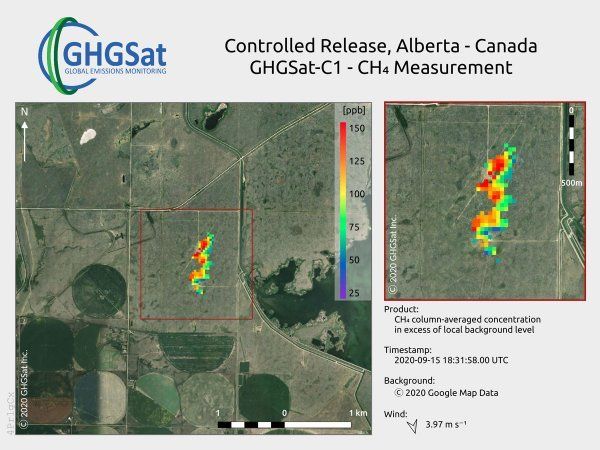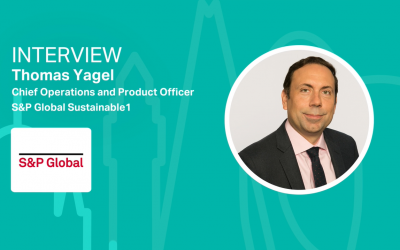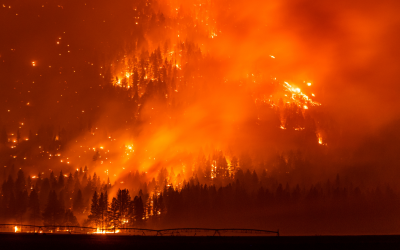Smallest methane emission ever detected by satellite
GHGSat, the global leader in high resolution greenhouse gas monitoring from space, has announced the first results from its latest satellite GHGSat-C1 (“Iris”), which already indicates performance 5 times better than its predecessor.

GHGSat, the global leader in high resolution greenhouse gas monitoring from space, has announced the first results from its latest satellite GHGSat-C1 (“Iris”), which already indicates performance 5 times better than its predecessor.
GHGSat is a private company on a mission to become the global reference for remote sensing of greenhouse gas (GHG), air quality gas, and other trace gas emissions from any source in the world. GHGSat’s technology can also be used to monitor air quality gases, as well as other trace gases, in the atmosphere. While the company currently focuses its efforts on methane and CO2, business cases are also being investigated for key markets, such as measuring SOx from ships.
Launched into low-Earth orbit just last month, GHGSat's latest satellite “Iris” was tasked with measuring a controlled release of methane from a facility in Alberta, Canada.
Ground measurements of the controlled release confirmed an emission rate of 260 kgCH4/hr, comparable to the emissions from a large landfill. The satellite successfully detected the controlled release, less than two weeks after launch.
An aircraft fitted with the same, patented GHGSat high-resolution sensor was flown at the same time over the site providing further data to validate the satellite measurement.
Stephane Germain, GHGSat CEO, said: “We are delighted by these first results and by how quickly we were able to confirm them. We knew Iris would be good, because we incorporated everything we had learned from our demonstration satellite, ‘Claire’, in orbit over the past four years.”
“Satellites are complex devices and it takes time to fully characterize instruments and optimize processing software to filter out noise from the signal. We have just begun that process with Iris. We expect Iris to attain 10 times better performance than Claire and are now even more confident that we will validate that performance in the coming weeks.”
“While other organizations aspire to use satellites to monitor methane emissions at high resolution, they remain years away from launching their first satellites. Now Iris has raised the bar even higher."
“These first results, advancing the state of the art in satellite monitoring of methane, are a testament to the great work done by our technical teams and our manufacturing partners. We are excited to deliver new insights for our customers using this expanded capability.”
Iris is the first of a new constellation of high-resolution satellites: the next, Hugo is scheduled to launch later this year, with a further 9 due to be in orbit by the end of 2022. Each new satellite will feature GHGSat’s unique sensing technology which is able to detect methane emissions from sources 100 times smaller than any other satellite, but with a resolution 100 times higher. That means GHGSat can detect and quantify methane emissions from point sources as small as oil & gas wells. No other commercial operator or state-funded space organization can do this.
Further details on the controlled release results can be found on the GHGSat website.






